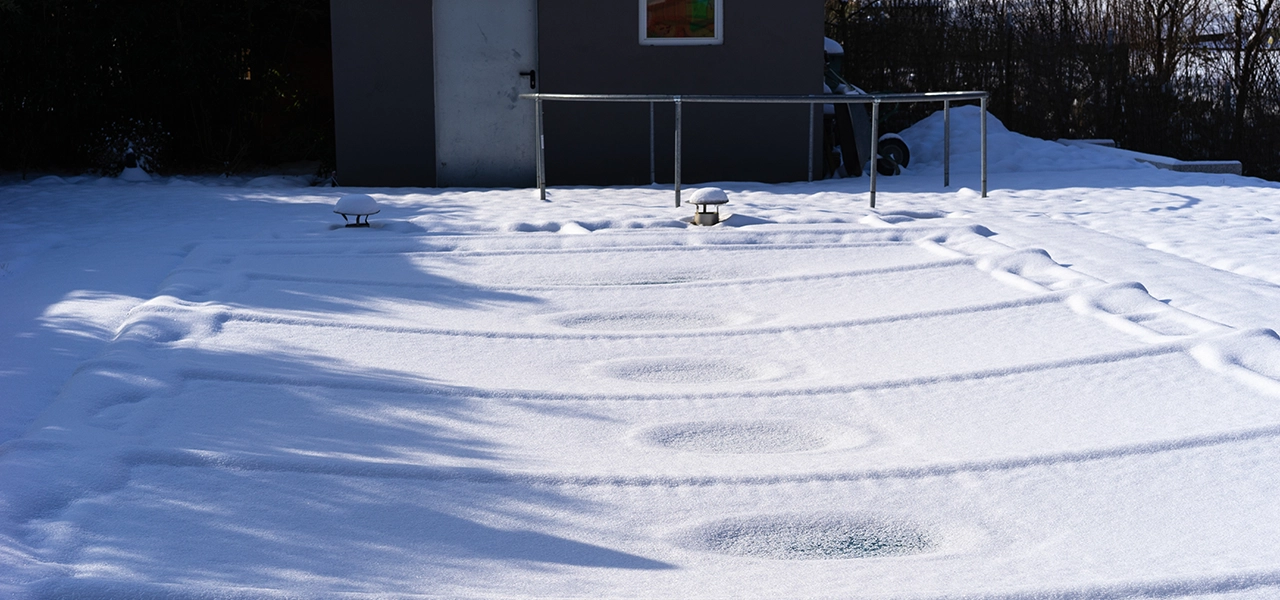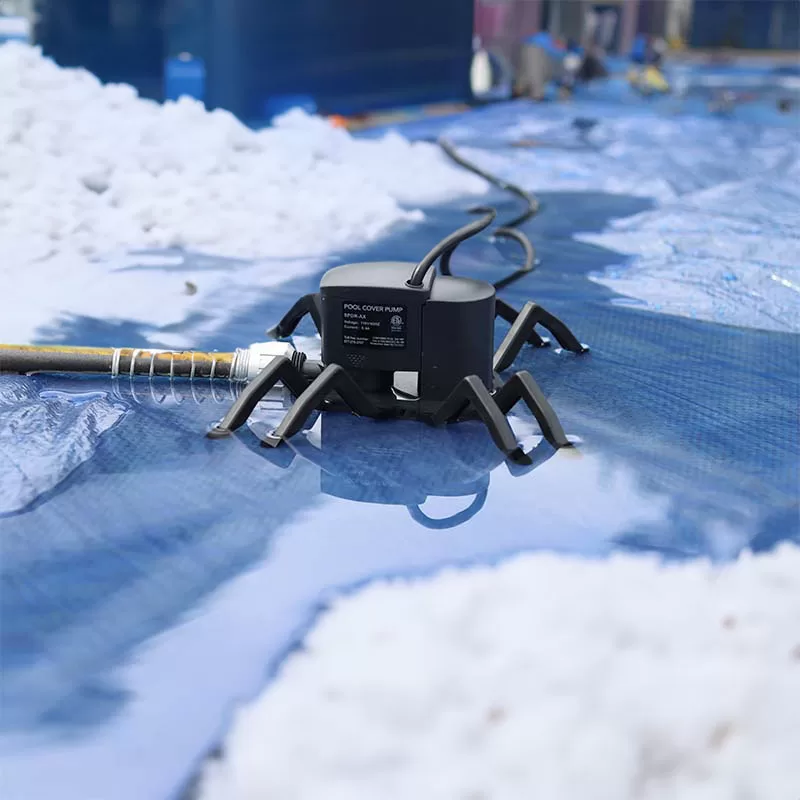FREE Standard Shipping On All Orders $100 or More!*

Dealing With Snow on Your Winter Pool Cover
In regions where winter brings heavy snowfall, pool owners face a unique set of challenges in maintaining the integrity of their pool covers. The weight and impact of snow can wreak havoc on your pool cover, so it’s important to safeguard it during the winter months. From prevention strategies to effective removal techniques, follow this guide to ensure that your pool cover’s condition is preserved.
Under 2' of Snow
Under two feet of snow, and you can usually kick back, relax in your easy chair and know that your tough winter cover or safety cover is designed to carry that kind of weight. As long as the water level has not dropped!
Winter covers need the support of the water, and if water drains out, the solid covers can tear or fall in, and safety cover straps and springs can fail, under a heavy snow load. The best place for winter water level is 3-6" below the skimmer opening. Monitor the level.

Mesh covers (safety covers) will look like they are going to break under the strain of snow, and often the cover will actually freeze to the water surface and look unsettling. Have no fear, for your cover will bounce back up to the original taut shape when ice thaws. Don’t try to accelerate the thaw, don’t try to break the cover free from the ice, and don’t use a metal snow shovel on the cover--it could tear it.
Solid covers will capture the snow melt as the thaw begins, be ready with your cover pump. 10" of snow translates to about 1" of water when it melts, and any more than an inch of water on your cover can cause stress, strain, and damage to the cover.
2' of Snow or More
If you get over two feet of snow, most pool covers and pool owners would benefit from trying to remove a foot or two from around the edge, being careful to not get close to the pool or pool edge. Don't worry about the pool cover, but clear the deck around the pool to facilitate drainage of snow melt.
Use a plug-in heat cable wrapped around the cover pump power cord and plugged into a 3-way plug, with the pump. The small amount of heat accelerates snow melt, and creates a fast channel for water to run to the pump, when laid across the pool cover surface all down the pool length. $40 at hardware stores.
3' of Snow or More
- Use a soft bristle push broom to gently remove the snow. If there is more snow in the forecast it will definitely help greatly to try to remove it as it falls.
- Use a plastic snow shovel to carefully remove snow from your cover. No guarantee that you won't rip your cover, but less risk using a plastic shovel.
- If the snow isn't wet and heavy, consider a strong leaf blower.
My friend puts pool salt on his pool cover, broadcasting the crystals over the pool cover, and turns on the cover pump the next day. He has a saltwater pool of course, but anyone could do it. Just use a few pounds only, and don't use sidewalk ice melt crystals, which have additives and impurities that you don't want in your pool.
Be Mindful of Pool Water Levels
Winter covers and safety covers rely on pool water levels to help alleviate some of the weight from snow and ice. For safety cover owners, If you know your pool is leaking (and if it is a slow leak that can't be repaired) try to add water throughout the winter so that the water level stays 3-12" below the skimmer opening. More than 12" below the skimmer, like this picture below, and you could have some real damage, especially to an old cover like this one.
Snow Will Melt...Then Freeze Again

Cover pumps will do much of the work for you if they are position correctly on your pool cover to help pump away the snow melt or existing ice as it melts. Automatic models are triggered when submerged beyond a certain point and can run all winter long. Manual pumps are turned on and off as needed.
Another affordable and incredibly effective winter pool cover accessory for above ground pools are air pillows. Air pillows float in the center of the pool, underneath the cover to keep the pool surface from freezing solidly across, which protects the pool walls from some serious damage. Always use an air pillow on aboveground pools. They also help channel water to the cover pump.
5' of Snow!?
Now you've got problems. But again, as long as there is sufficient water level in the pool, the frozen pool will support 60" of snow. First, work on clearing a path to the pool, and then slowly remove snow from around the pool. Then you can assess the pool cover situation.